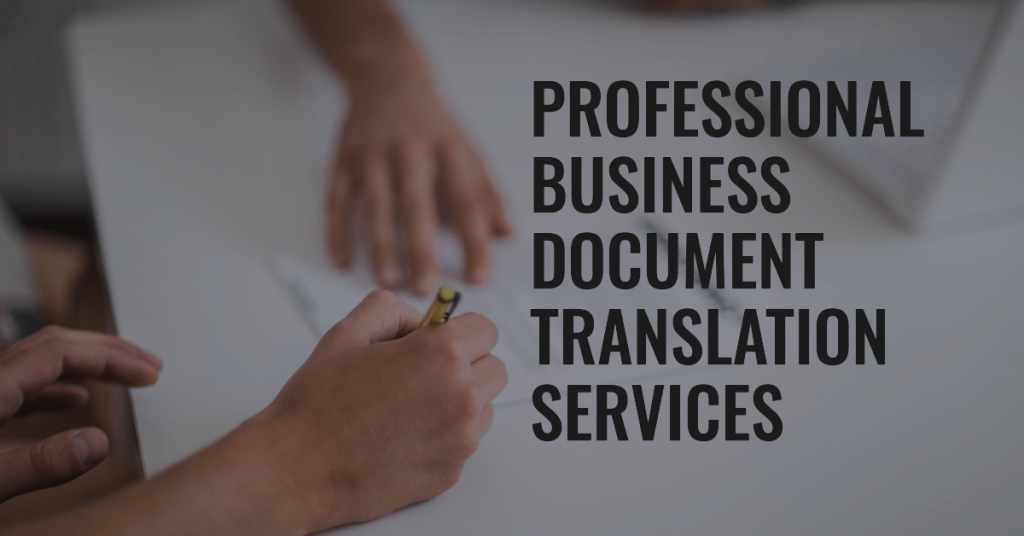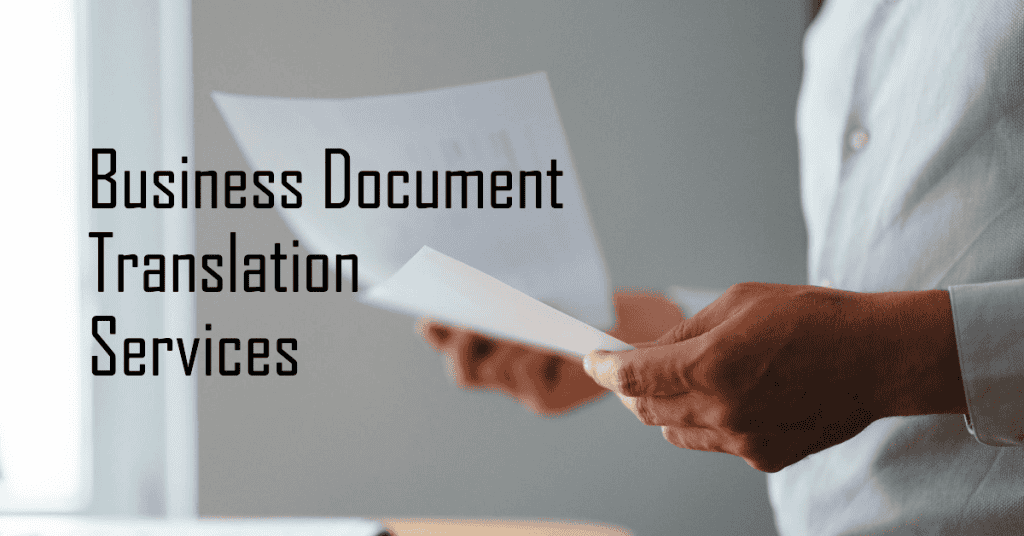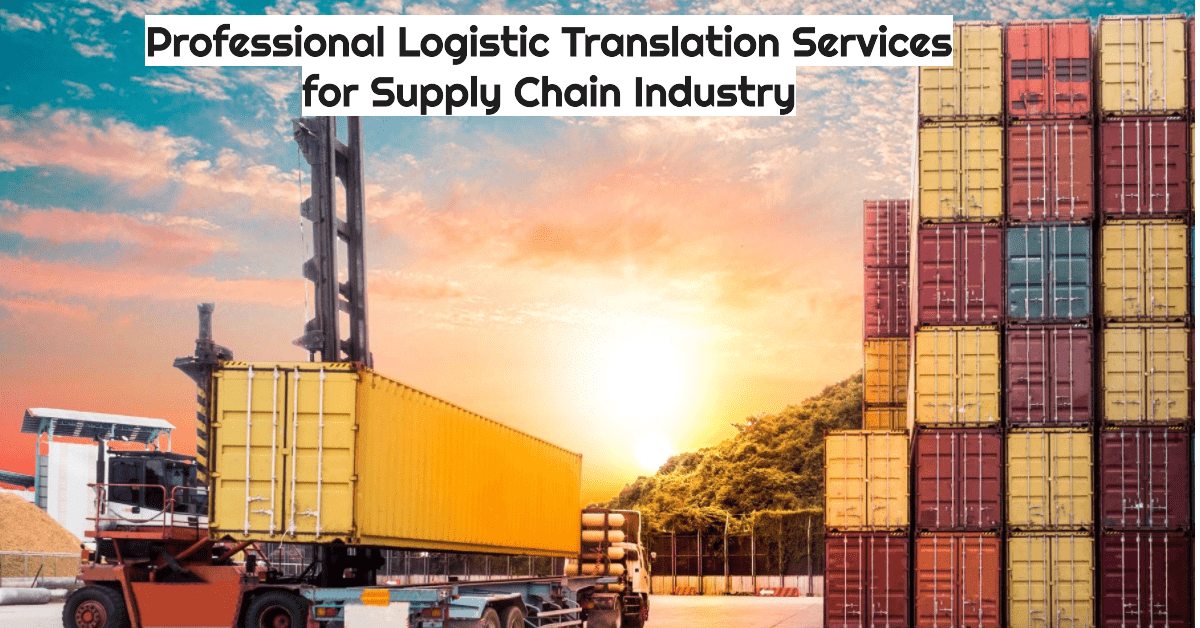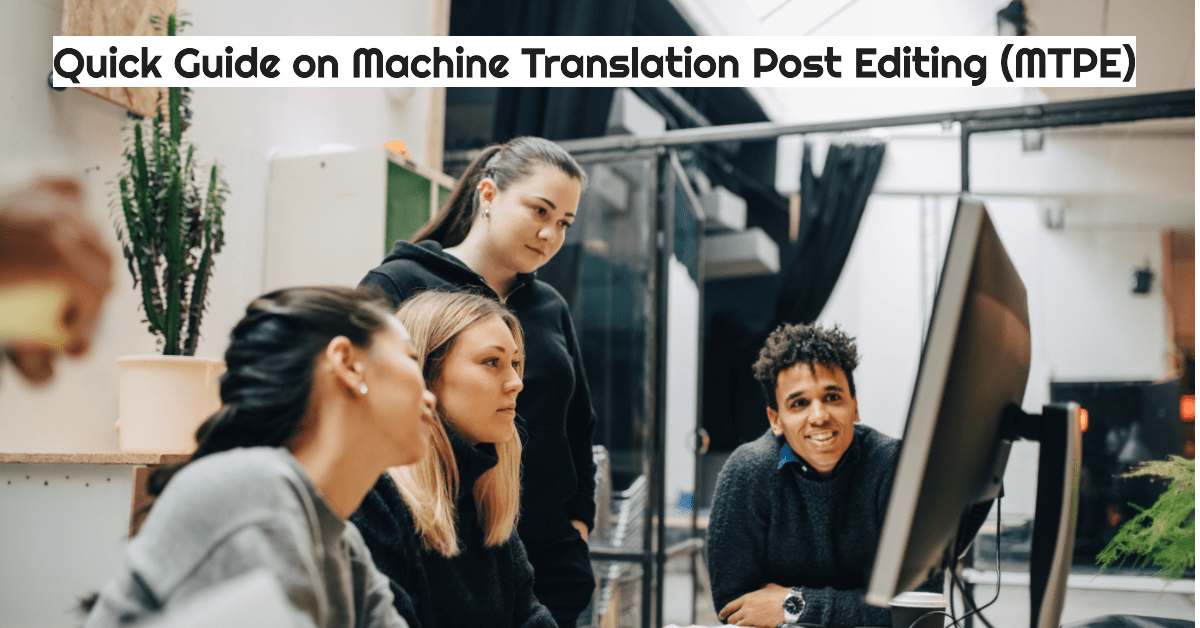Hidden Power of Business Document Translation: Unlocking Global Success
Beyond Words – The Strategic Edge of Translated Documents
In today’s globalized business environment, translation has evolved from a simple language conversion to a strategic asset essential for international success. As companies expand across borders, effective communication with diverse audiences becomes critical. Translated documents serve not only to bridge language gaps but also to build trust, establish credibility, and drive growth in new markets.
These documents are vital for navigating complex international regulations, creating a consistent brand image, and fostering strong partnerships. High-quality translations demonstrate respect for local cultures, enhancing your reputation and setting you apart from competitors who may overlook this crucial aspect of cross-cultural communication.
Moreover, the consequences of poor translations can be severe, leading to legal issues, brand damage, or financial losses. In contrast, well-executed translations can accelerate time-to-market, improve customer satisfaction, and positively impact your bottom line.
As we explore the different aspects of business document translation, it’s essential to view this process as a valuable investment in your company’s global future. The strategic edge gained through expertly translated documents can unlock new opportunities and drive sustainable growth.
The Ripple Effect: How Accurate Translations Impact Your Entire Organization
Accurate translations have a profound impact that extends far beyond mere communication, creating a ripple effect that touches every aspect of your organization. This effect is particularly evident in two crucial areas: boosting employee engagement across borders and mitigating legal risks in international markets.
Boosting Employee Engagement Across Borders
Employee Engagement across borders is essential for multinational companies seeking to create a cohesive global workforce. At the heart of this effort is the creation of a unified company culture.
This begins with the accurate translation of core values and mission statements, ensuring that every employee, regardless of their location or native language, understands and embraces the company’s fundamental principles.
By providing consistent messaging across all locations, organizations can foster a sense of unity and shared purpose among their diverse workforce.
Furthermore, accurate translations play a vital role in enhancing cross-team collaboration. In multinational projects, clear communication is the cornerstone of success.
When team members from different countries can understand project goals, timelines, and expectations with precision, it significantly reduces misunderstandings and improves overall efficiency. This clarity not only streamlines workflows but also builds trust and rapport among team members, leading to more innovative and productive collaborations.
Mitigating Legal Risks in International Markets
This is another critical area where accurate translations prove invaluable. Navigating complex regulatory landscapes requires a deep understanding of local laws and regulations, which can only be achieved through precise translations of legal and compliance documents. The importance of accuracy in this context cannot be overstated, as even minor errors can lead to severe consequences.
There are numerous examples of costly mistranslations in legal contexts that have resulted in litigation, financial losses, and damage to company reputations. Protecting intellectual property globally is another aspect where accurate translations are crucial. Translating patents and trademarks effectively ensures that a company’s innovations and brand identity are properly safeguarded in international markets.
This process involves not just linguistic accuracy but also an understanding of the legal nuances in different jurisdictions. Ensuring consistent terminology across jurisdictions is particularly important, as it helps maintain the integrity and enforceability of intellectual property rights worldwide.
By investing in accurate translations, organizations can create a more engaged workforce, foster better cross-cultural collaboration, and protect their interests in the global marketplace. The ripple effect of these accurate translations extends to improved operational efficiency, stronger brand consistency, and ultimately, better business outcomes in international markets
Art of Cultural Nuance: When Translation Becomes Transformation
In the realm of global business, effective translation goes beyond mere linguistic conversion. It’s an art form that requires a deep understanding of cultural nuances, transforming content to resonate with diverse audiences. This transformation is particularly crucial in two key areas: localizing marketing materials and adapting technical documentation for global audiences.
Localizing Marketing Materials for Maximum Impact
Localisation service is essential for brands looking to make a meaningful connection with international consumers. Effective marketing localization involves more than just translating words; it requires adapting the entire message to align with local cultural contexts, preferences, and sensibilities.
One of the primary techniques for effective marketing localization is adapting slogans and taglines. A catchy phrase in one language may fall flat or, worse, offend in another. Skilled translators work to capture the essence of the original message while crafting something that resonates with the target audience. This often involves creative reimagining rather than literal translation, ensuring that the brand’s core message maintains its impact across different cultures.
Another critical aspect of marketing localization is considering color symbolism and imagery. Colors and images can carry vastly different meanings across cultures. For instance, while white symbolizes purity in Western cultures, it’s associated with mourning in many Eastern cultures. Similarly, certain gestures or images may be perfectly acceptable in one country but offensive in another. Effective localization takes these cultural differences into account, adapting visual elements to ensure they convey the intended message without causing unintended offense.
Adapting Technical Documentation for Global Audiences
Localising technical document presents its own set of challenges, primarily centered around balancing precision with accessibility. Technical documents, whether they are user manuals, product specifications, or scientific papers, often contain complex concepts and specialized terminology. The challenge lies in making this information understandable to a global audience without sacrificing accuracy.
Strategies for simplifying complex concepts without losing accuracy include using plain language principles, breaking down information into digestible chunks, and providing clear, step-by-step explanations. Translators must work closely with subject matter experts to ensure that simplified explanations still convey the necessary technical details accurately.
Using visuals to overcome language barriers is another effective strategy in technical documentation. Diagrams, infographics, and instructional videos can often communicate complex ideas more clearly than text alone, especially when dealing with audiences from diverse linguistic backgrounds. These visual aids can complement the translated text, providing additional clarity and reducing the risk of misinterpretation.
Industry-specific challenges and solutions vary across fields like medicine, engineering, and IT. In medicine, for example, translators must navigate complex anatomical terms and drug names, ensuring absolute accuracy as errors could have life-threatening consequences. In engineering, precision in measurements and technical specifications is paramount. IT documentation often deals with rapidly evolving terminology that may not have direct equivalents in other languages.
To address these challenges, translators specialising in these fields often undergo additional training and certification. They stay updated with the latest industry developments and work closely with experts to ensure accuracy. In some cases, they may need to create glossaries of standardized terms to maintain consistency across all translated materials within a specific industry.
By mastering the art of cultural nuance in both marketing and technical translations, businesses can truly transform their global communications. This approach ensures that their message not only reaches international audiences but also resonates with them on a deeper, more meaningful level.
Beyond Text: The Rise of Multimedia Document Translation
In today’s digital age, business communication extends far beyond traditional text documents. The rise of multimedia content has revolutionized how companies convey information, leading to new challenges and opportunities in document translation. This section explores two key areas of multimedia translation: infographics and data visualizations, and video content localization.
Translation of Infographics and Data Visualizations
Translating Infographics and Data Visualizations has become increasingly important as businesses rely more on visual representations to communicate complex information quickly and effectively. The challenge lies in maintaining visual impact across cultures while ensuring the information remains accurate and easily understood.
Adapting charts and graphs for different reading directions is a crucial consideration. While many Western cultures read from left to right, others, such as Arabic and Hebrew, read from right to left. This difference can significantly affect how data is interpreted in visual formats. Translators and designers must work together to reorient charts and graphs to match the reading direction of the target audience, ensuring that the flow of information remains intuitive and logical.
Localizing units of measurement and data formats is another vital aspect of translating infographics and data visualizations. Different countries use various systems for measurements, dates, and numerical formats. For instance, while the United States uses the imperial system, most countries use the metric system. Similarly, date formats vary (MM/DD/YYYY vs. DD/MM/YYYY), as do decimal and thousand separators. Accurate localization of these elements is crucial for preventing misunderstandings and maintaining the credibility of the information presented.
Best practices for designing globally-friendly visuals include using culturally neutral icons and symbols. What may be a common symbol in one culture could be meaningless or even offensive in another. Designers and translators should opt for universally recognized symbols or create custom icons that are easily understood across cultures.
Considering color meanings in different cultures is also essential when adapting visual content. Colors can evoke strong emotions and associations that vary widely across cultures. For example, while red signifies luck and prosperity in China, it’s associated with danger or warning in many Western countries. A thoughtful approach to color usage in global visual content can help avoid unintended messages and ensure that the intended emotional impact is preserved across different cultural contexts.
Video Content Localisation:
Video content localisation such subtitling and dubbing is another critical area in multimedia translation. As video becomes an increasingly popular medium for business communication, companies must decide how best to make their content accessible to international audiences.
Choosing the right approach for your audience and budget involves weighing the pros and cons of subtitling and dubbing. Subtitling is generally less expensive and faster to produce. It allows viewers to hear the original audio, which can be beneficial for language learners or when the speaker’s identity is important. However, subtitles can be distracting and may not be suitable for content with a lot of on-screen text or fast-paced dialogue.
Dubbing, on the other hand, provides a more immersive experience for viewers who prefer content in their native language. It’s particularly effective for educational content, promotional videos, and materials aimed at audiences less comfortable with reading subtitles. However, dubbing is typically more expensive and time-consuming to produce, and some nuances of the original performance may be lost in translation.
Technical considerations in multimedia translation add another layer of complexity to the localization process. For subtitling, time and space constraints are significant factors. Subtitles must be concise enough to be read quickly while still conveying the full meaning of the dialogue. They also need to be synchronized precisely with the audio and visuals.
Dubbing presents its own set of challenges, particularly in lip-syncing. Translators and voice actors must work together to create dialogue that matches the mouth movements of the on-screen speakers as closely as possible. This often requires creative adaptation of the original script to maintain natural-sounding speech while fitting the visual cues.
As multimedia content continues to grow in importance, businesses must adapt their translation strategies to encompass these diverse formats. By understanding the nuances of translating visual and audio content, companies can create more engaging and effective communications for their global audiences.
Impact of Document Translation on Global Branding
In international business, translation plays a pivotal role in shaping a company’s global brand identity. Far beyond mere linguistic conversion, effective translation can significantly influence how a brand is perceived and received in different markets. This section explores two critical aspects of translation’s impact on global branding: building trust with local audiences and maintaining brand voice across languages.
Building Trust with Local Audiences
Building trush is fundamental to a brand’s success in new markets. Accurate translation is not just about conveying information; it’s about establishing brand credibility and demonstrating respect for local cultures. When a brand communicates fluently and authentically in the local language, it shows commitment to the market and a genuine desire to connect with its audience. This level of dedication can significantly enhance brand perception and foster trust among potential customers.
The role of accurate translation in establishing brand credibility cannot be overstated. Poorly translated content, whether it’s on a website, in marketing materials, or product descriptions, can severely damage a brand’s reputation. Inaccuracies or awkward phrasing can make a company appear unprofessional or careless, potentially driving away customers. Conversely, high-quality translations that capture the nuances of the local language can elevate a brand’s status, positioning it as a reliable and trustworthy entity in the market.
Case studies of brands that successfully localized their messaging provide valuable insights into effective global branding strategies. For instance, Coca-Cola’s “Share a Coke” campaign, which featured popular local names on bottle labels, was adapted for numerous countries, taking into account cultural norms and naming conventions. This localization effort resulted in increased sales and social media engagement across various markets. Another example is McDonald’s, which has successfully adapted its menu and marketing to suit local tastes and cultural preferences in different countries, while maintaining its core brand identity.
Maintaining Brand Voice Across Languages
Branding localisation is a delicate balancing act that requires skill, cultural awareness, and creativity. A brand’s voice is a crucial component of its identity, encompassing its personality, values, and the way it communicates with its audience. When expanding into new markets, the challenge lies in preserving this essence while adapting to different cultural contexts.
Strategies for preserving the essence of a brand while adapting to different cultures involve a deep understanding of both the brand’s core values and the target culture. This might include adapting idiomatic expressions, using culturally relevant metaphors, or even creating new concepts that align with the brand’s message but resonate more effectively with the local audience. For example, a brand known for its witty and playful tone in English markets might need to adjust its approach in cultures where more formal communication is the norm, without losing its fundamental character.
The importance of working with native speakers for authentic translations cannot be overstated. Native speakers bring not only linguistic expertise but also cultural insights that are invaluable in crafting messages that truly connect with the local audience. They can identify subtle nuances, cultural references, and potential pitfalls that non-native speakers might miss. This level of cultural fluency ensures that the brand’s message is not just accurately translated, but culturally translated, maintaining its impact and relevance in the new market.
Moreover, collaboration between native translators and the brand’s marketing team is crucial. This partnership ensures that the local translations align with the global brand strategy while effectively addressing the specific needs and preferences of the target market. It’s a process that often involves creative problem-solving and cultural mediation to find the perfect balance between global consistency and local relevance.
In conclusion, the impact of translation on global branding is profound and multifaceted. By investing in high-quality, culturally sensitive translations, brands can build trust, establish credibility, and maintain their unique voice across diverse markets. This approach not only helps in avoiding potential pitfalls but also creates opportunities for deeper connections with international audiences, ultimately driving global brand success.
Types of Business Documents Requiring Translation
In the global business landscape, various types of documents require professional translation to ensure effective communication across different markets. Each category of document presents unique challenges and considerations in the translation process. Let’s explore four key types of business documents that commonly require translation: legal documents, marketing materials, technical documentation, and financial reports.
Legal Documents
Legal document translation forms a critical category in business translation. These include contracts, agreements, and compliance documentation. The translation of legal documents demands the highest level of precision and accuracy, as even minor errors or misinterpretations can lead to serious disputes or legal complications.
Contracts and agreements are the backbone of business relationships, outlining rights, responsibilities, and terms of engagement between parties. When these documents are translated, it’s crucial to maintain the exact legal meaning and intent of the original text. This often requires not just linguistic expertise but also a deep understanding of legal systems in both the source and target countries.
Compliance documentation, such as regulatory filings or policy statements, must also be translated with utmost care. These documents ensure that a company adheres to local laws and regulations, making accuracy paramount. Mistranslations in compliance documents can result in regulatory violations, fines, or damage to a company’s reputation.
The importance of precision in legal language cannot be overstated. Translators working on legal documents must be well-versed in legal terminology and concepts in both languages. They often collaborate with legal experts to ensure that the translated documents maintain their legal integrity and enforceability across different jurisdictions.
Marketing Materials
Marketing materials represent another crucial category of business documents requiring translation. These include brochures, advertisements, website content, and social media posts. The challenge in marketing translation lies not just in conveying the message accurately, but in adapting it to resonate with local cultures and preferences.
Effective translation of marketing content goes beyond word-for-word conversion. It requires a deep understanding of the target market’s cultural nuances, consumer behavior, and linguistic preferences. A slogan or tagline that works well in one language might lose its impact or even become offensive when directly translated into another.
Adapting messaging to local cultures often involves creative transcreation – the process of adapting a message from one language to another while maintaining its intent, style, tone, and context. This might include using local idioms, cultural references, or humor that resonates with the target audience.
For social media content, translators must also consider platform-specific language trends and character limitations. The goal is to create content that feels native to the local audience while maintaining the brand’s global identity.
Technical Documentation
Technical documentation encompasses a wide range of materials, including user manuals, product specifications, and installation guides. Translating these documents requires a combination of linguistic skill and technical knowledge to ensure clarity and accuracy for end-users across different languages.
The primary challenge in technical translation is maintaining accuracy while making the content accessible to users who may have varying levels of technical expertise. Translators must have a solid understanding of the subject matter to accurately convey complex concepts and procedures.
Consistency in terminology is crucial in technical translations. Many companies develop glossaries of technical terms to ensure that specific concepts are translated uniformly across all documents. This consistency helps prevent confusion and ensures that users can easily follow instructions or understand product features.
Visual elements often play a significant role in technical documentation. Translators may need to work closely with designers to adapt diagrams, charts, or screenshots to suit the target language, ensuring that all visual elements align with the translated text.
Financial Reports
Financial reports, including annual reports, audits, and investment documents, form another critical category of business documents requiring translation. These documents often contain complex financial data, industry-specific terminology, and regulatory information that must be accurately conveyed to international stakeholders.
The financial translation of financial reports requires not only linguistic expertise but also a thorough understanding of financial concepts and reporting standards. Translators working on these documents must be familiar with accounting principles, financial regulations, and market-specific terminology in both the source and target languages.
Consistency in financial terminology is paramount to maintain credibility and avoid misinterpretation of financial data. Many financial terms have specific, standardized translations that must be used consistently throughout the document. This often involves creating and maintaining comprehensive glossaries of financial terms.
Accuracy in translating numerical data, including currency conversions and financial metrics, is crucial. Translators must pay close attention to formatting conventions for numbers, dates, and currencies, which can vary significantly between countries.
In conclusion, each type of business document presents unique challenges in the translation process. Whether it’s maintaining legal precision, adapting marketing messages, ensuring technical clarity, or preserving financial accuracy, professional translators must possess both linguistic skills and domain-specific knowledge to produce high-quality translations that serve their intended purpose in the global business environment.
Measuring ROI: The Tangible Benefits of Quality Document Translation
In the global marketplace, quality document translation is not just a necessity; it’s a strategic investment that can yield significant returns. This section explores how to measure the Return on Investment (ROI) of translation services by focusing on two key areas: accelerating time-to-market in new regions and improving customer satisfaction and retention.
Accelerating Time-to-Market in New Regions
One of the most tangible benefits of quality document translation is the ability to enter new markets quickly and efficiently. Companies that can rapidly localize their products and supporting materials gain a competitive edge, often capturing market share before their rivals can react.
Key factors in rapid, successful market entry include implementing parallel translation and localization processes. This approach involves initiating translation work concurrently with product development or adaptation, rather than waiting until after the product is finalized. By doing so, companies can significantly reduce the time gap between domestic and international releases.
Scalable translation workflow
Building a scalable translation workflow is another crucial factor. This involves creating a system that can handle increasing volumes of content across multiple languages without sacrificing quality or speed. A scalable workflow might include:
– Establishing a centralized terminology database to ensure consistency across all translations
– Implementing translation memory tools to reuse previously translated content
– Developing style guides for each target market to maintain brand voice and cultural appropriateness
– Creating a network of reliable translators and reviewers who are familiar with the company’s products and industry
By focusing on these key factors, companies can streamline their market entry process, potentially reducing time-to-market by weeks or even months. This acceleration can lead to earlier revenue generation, increased market share, and a stronger competitive position in new regions.

Embracing Document Translation as a Strategic Business Asset
As we have explored throughout this comprehensive discussion on business plan document translation, it’s clear that translation is far more than a mere operational necessity—it’s a powerful strategic asset that can drive global success and competitive advantage.
The impact of quality translation ripples through every aspect of an organization, from boosting employee engagement across borders to mitigating legal risks in international markets. We’ve seen how accurate translations can create a unified company culture, enhance cross-team collaboration, and protect intellectual property on a global scale.
Moreover, the art of cultural nuance in translation transforms content to resonate deeply with diverse audiences. Whether it’s localizing marketing materials for maximum impact or adapting technical documentation for global accessibility, the power of culturally sensitive translation cannot be underestimated. This cultural adaptation extends beyond text to encompass multimedia elements, including infographics, data visualizations, and video content, ensuring that a company’s message is conveyed effectively across all mediums.
The role of translation in shaping global branding has emerged as a critical factor in international success. By building trust with local audiences through accurate and culturally appropriate translations, companies can establish credibility and foster brand loyalty across diverse markets. Maintaining a consistent brand voice while adapting to different cultural contexts is a delicate balance that, when achieved, can significantly enhance a company’s global presence.
We’ve also examined the various range of business documents that require translation, from legal contracts and marketing materials to technical manuals and financial reports. Each category presents unique challenges and underscores the need for specialized expertise in translation services.
Finally, by measuring the ROI of quality document translation, companies can quantify the tangible benefits of this investment. Accelerated time-to-market in new regions and improved customer satisfaction and retention are just two areas where the impact of effective translation becomes evident.
Professional Business Document Translation Service Company in Singapore
In conclusion, embracing translation as a strategic business asset is no longer optional for companies with global aspirations—it’s imperative.
By viewing translation through a strategic lens, organizations can unlock new opportunities, mitigate risks, and build stronger connections with international stakeholders.
As appropriate businesses continue to navigate the complexities of the global marketplace, those that prioritize and invest in high-quality, culturally nuanced translation will be best positioned to thrive on the world stage.
To fully leverage translation as a strategic asset, companies should:
- Integrate translation considerations early in their product development and marketing processes.
- Invest in building a robust, scalable translation workflow that can grow with every businesses.
- Prioritize cultural adaptation alongside linguistic accuracy in all translated materials.
- Regularly measure and analyze the impact of translation on key business operation metrics.
- Foster collaboration between translation teams and other departments to ensure alignment with overall business strategies and business needs.
By taking these steps, businesses can harness the full potential of translation, transforming it from a necessary expense into a powerful driver of global growth and success.
Choose to work with WhizWordz translation provider for your professional business document translation. Do contact us for a non-obligation quote.
Frequently Asked Questions (FAQs)
Q1: How much does it cost to translate a document in Singapore?
A: The cost of translating a document in Singapore can vary widely depending on several factors, including the length of the document, the complexity of the content, the languages involved, and the urgency of the translation. On average, prices can range from SGD 0.12 to SGD 0.30 per word.
It’s advisable to request quotes from multiple translation services for a more accurate estimate. Do check out our article on translation pricing here.
Q2: What is business translation services?
A: Business translation services refer to the professional translation of documents and materials used by businesses, ensuring that they are accurately translated into different languages. This can include contracts, marketing materials, product descriptions, websites, and other business-related documents. These services often require specialised knowledge of industry terminology and cultural nuances.
Q3: How long does it take to translate a document?
A: The time required to translate a document depends on its length and complexity, as well as the availability of translators. Generally, a translator can process about 1,500 to 2,500 words per day. For urgent requests, some translation services offer expedited options, which can significantly reduce turnaround times.
Q4: What are some common business document translations?
A: Some common types of business document translations include:
- Contracts and agreements
- Financial reports
- Marketing brochures
- Product manuals
- Website content
Q5: What are some common languages for Business Document translation?
Some of the most common langauges that we seen in business document translation consists of Chinese translation, Japanese translation, Korean translation, Indonesian translation, Vietnamese translation, Thai translation for Asian countries. For European countries, it would consist of German translation, French translation and Portuguese translation.




